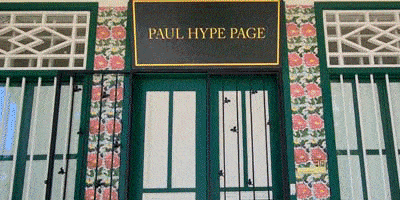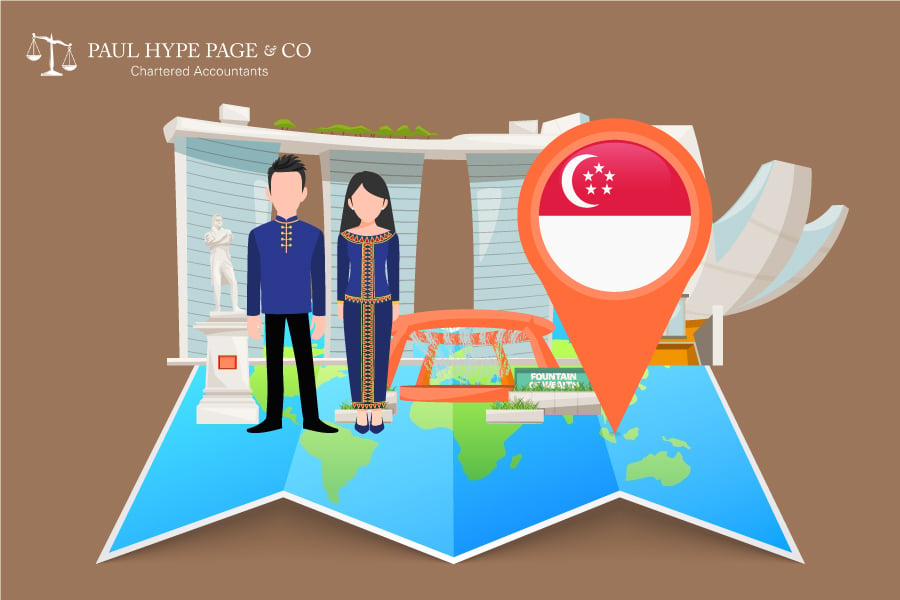Outline
- What is Singapore’s Geographical Location & Time Zone?
- Temperature & Seasons in Singapore
- Year-Round Tropical Climate
- UV Index & Sun Exposure
- Rain & Thunderstorms Are Frequent
- Air-Conditioning Everywhere
- Haze & Air Quality Concerns
- Best Time to Visit Singapore
- Packing List for Singapore’s Weather
- Final Thoughts: Adjusting to Singapore’s Climate
- Working & Living in Singapore
- START WORKING AND LIVING IN SINGAPORE TODAY
- FAQs
The time in Singapore now is:
Before moving or starting a company in Singapore, understanding the time, climate, and weather are important considerations.
As a country close to the Equator, Singapore has tropical forest climates, thunderstorms, abundant rainfall, and constantly hot and humid conditions. There’s a lot of interesting bits of information about both Singapore’s time zone and its weather which we will share below!
What is Singapore’s Geographical Location & Time Zone?
Time zones are usually determined by their geographical location, but that’s not the case for Singapore. Singapore, according to its location, should be in the UTC+7 time zone, but the Singapore Time is calculated by using the UTC+8 time zone!
The new time zone is beneficial for Singapore because:
- More major business hubs are in the UTC+8 time zone as compared to the UTC+7 time zone, this includes:
- Shanghai
- Beijing
- Hong Kong
- Macau, among others
- UTC+8 time zone is the world’s most populous with 24% of the world’s population living in this time zone, gaining greater access to the world’s largest market by time zone. This is one of the many reasons why investors are choosing Singapore as their place to set up a company.
Temperature & Seasons in Singapore
The temperature in Singapore typically ranges from 23 to 33 degrees Celsius, with day temperatures between 31 to 33 degrees and night temperatures between 23 to 25 degrees.
Singapore does not have the usual 4 seasons-spring, autumn, summer, or winter, but there are distinctive seasons in Singapore which are:
- Dry Season-February to August
- Less rainfall with occasional thunderstorms
- Temperature seldom exceeds 31 degrees Celsius
- Rainy Season-October to November
- More rainfall with periodic thunderstorms in the afternoon & early evening
- Temperature is usually 31 degrees Celsius Marks the start of inter-monsoon periods
- Monsoon Seasons-June, September & October to November
- Dry, hot, and humid weather with rainfall occurring in short durations and thunderstorms and strong winds are expected
- Inter-monsoon periods are between late March and May and between October and November
- Windy Season
- Eastern and southern parts of Singapore are usually the windiest
- Winds are usually followed by thunderstorms and rainfall & stronger during monsoon periods and lighter during inter-monsoon periods
- Wind speed of 10ms is the highest during the northeast monsoon period
While these patterns serve as general indicators of Singapore’s weather, climate change has led to shifts in the timing and intensity of these seasons. As a result, variations in rainfall, temperature, and wind conditions may occur outside of their usual timeframes.
Year-Round Tropical Climate
- High humidity levels, usually between 70% and 90%, making it feel hotter than the actual temperature
- Even at night, temperatures rarely drop below 24°C
UV Index & Sun Exposure
- Singapore has an extremely high UV index, often exceeding 10
- Without protection, sunburn can occur in just 15 minutes
- Apply SPF 50+ sunscreen, wear sunglasses, and use a hat or umbrella for shade
Rain & Thunderstorms Are Frequent
- Singapore receives 2,300 mm of rainfall annually, making it one of the wettest cities in the world
- Rain can be intense but short-lived, usually lasting 30 minutes to 2 hours
- Flash floods can happen in low-lying areas, and lightning is common
Air-Conditioning Everywhere
- Indoor spaces like malls, offices, and public transport are kept at temperatures between 18-22°C
- Some people experience discomfort due to the sharp temperature difference between indoor and outdoor environments
Haze & Air Quality Concerns
- During the Southwest Monsoon (June-September), Singapore can experience haze from regional forest fires
- Haze can cause respiratory issues and eye irritation
- The government issues PSI (Pollutant Standards Index) updates for air quality levels
Best Time to Visit Singapore
- February to April offers less rain and pleasant temperatures
- July to September features major festivals and events
- December to January has the heaviest rainfall, while June to September may see haze conditions
Packing List for Singapore’s Weather
- Light, breathable clothing (cotton, linen)
- Sunscreen (SPF 50+), sunglasses, and a hat
- Umbrella and raincoat for sudden rain
- Comfortable walking shoes (streets can be slippery after rain)
- Portable fan or cooling wipes for hot days
- N95 mask for haze season
Final Thoughts: Adjusting to Singapore’s Climate
Foreigners moving to or visiting Singapore should expect hot, humid, and rainy conditions year-round. Being prepared with the right clothing, sun protection, and knowledge of monsoon seasons will help make your stay much more comfortable.
Key Takeaways:
- Always carry an umbrella and sunscreen
- Expect sudden heavy rain and high humidity
- Check PSI levels during haze season
- Indoor places are cold due to air-conditioning
By understanding Singapore’s tropical weather, you can better plan activities, dress appropriately, and stay comfortable throughout your stay.
Working & Living in Singapore
Singapore’s weather and time zone make it a very liveable destination. If you’re considering working in Singapore, contact us to know the steps to get your Employment Pass! For those who are interested in moving to Singapore or setting up a new company, let us help with your company incorporation process!
FAQs
The best time to visit Singapore is during the months from December to February. This time around in Singapore is quite festive as the country celebrates Christmas and Chinese New Year. The whole of the city is surrounded by spectacular light-ups and various stalls that sell food, ornaments, pottery, and decorative items. We suggest refraining from coming to Singapore in May and June as the heat and smoke are at their peak during this time.
December and January are the coldest months in Singapore, however, Singapore do not have the typical 4 seasons.
Northern and western parts of Singapore have the highest rainfalls in the whole nation.
Yes, being very close to the equator, Singapore is humid because it is close to the sea and it rains frequently.
Share This Story, Choose Your Platform!
Related Business Articles






